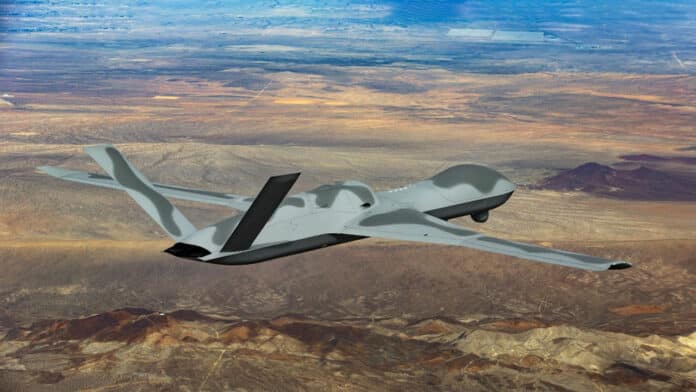There’s no denying that the evolution of technology is leading us toward a future where even weapon systems will have some level of autonomy. Although they may not be making the final decisions or firing the weapon themselves, they will still be capable of performing tasks that we can’t even imagine at the moment. Recently, the MQ-20 Avenger has demonstrated this capability.
On November 13th, 2023, General Atomics Aeronautical Systems, Inc. (GA-ASI) conducted a live flight test, showcasing their hardware-agnostic, open standards-based autonomy ecosystem for Unmanned Combat Air Vehicles (UCAVs). During the test, a GA-ASI MQ-20 Avenger was used, and it included three software-defined radios (SDRs) from L3Harris Technologies. These SDRs were used to enable Line-of-Sight (LOS), command and control, and data movement capabilities via Waveform X.
During the recent demonstration, an SDR called L3Harris’ Pantera was integrated into an MQ-20 unmanned aircraft, while another SDR, BANSHEE 2, was on the ground, working in conjunction with a third L3Harris SDR to form an IP-based Mesh Network as part of the Mission Control Element.
The test showcased a non-proprietary U.S. government-owned communications capability called Waveform X, along with the ability to fly and flip flight hardware as part of the Open Mission Systems (OMS) and skills-based unmanned autonomy ecosystem.
In addition, the flight demonstration highlighted the ability to rapidly plug and play both U.S. Navy and U.S. Air Force (USAF) autonomous unmanned technologies together. It also leveraged autonomy from three separate sources: government-provided human-machine interface (HMI) hardware, GA-ASI’s autonomy core, and orchestration of these components using Waveform X.
The flight took place at GA-ASI’s Desert Horizon Flight Operations Facility in El Mirage, California. It showed how autonomy skills can achieve multiple objectives for collaborative combat missions and complete the Find, Fix, Track, Target, Engage, and Assess (F2T2EA) cycle using a combination of Live, Virtual, and Constructive (LVC) entities.
“This flight underscores GA-ASI’s commitment to proving combat operational readiness for defense contractor products such as L3Harris’ Pantera and BANSHEE 2 radios, as well as open, vendor-agnostic autonomy architecture for UCAV platforms,” said GA-ASI Vice President of Advanced Programs Michael Atwood. “This most recent test shows multi-service compatibility of the autonomy core through the integration of USAF and Navy software skills, bringing us one step closer to a government-owned, skills-based interservice ecosystem for ACPs.”
The Avenger drone can fly for up to 18 hours and can reach speeds of 400 mph (650 km/h) and altitudes of up to 50,000 feet (15,000 meters). Its primary mission is combat, and it can carry a variety of bombs and missiles on its six external hardpoints or inside the weapons bay, which can hold up to 3,500 pounds (1,600 kg) of ammunition. To reach its target and gather relevant information, the drone relies on a ground control station and a communication network.
There is no information on whether the successful demonstration of autonomous unmanned technologies will be implemented in the real world. However, General Atomics has stated that it will continue to use the Avenger drone as a test bed for further trials. It is possible that more new and unconventional technologies will be tested in the future for military development purposes.
